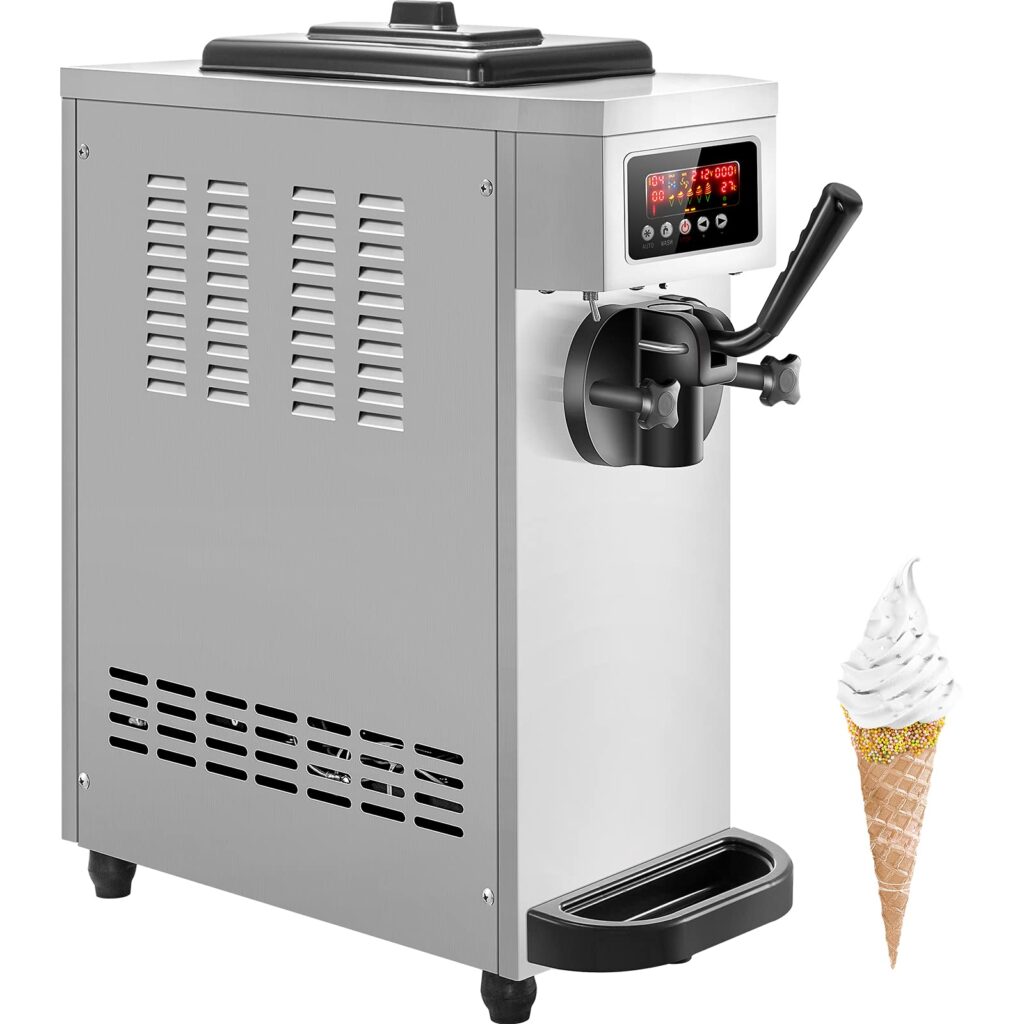With the continuous improvement of people’s living standards, ice cream has gradually entered people’s lives as a delicacy. Whether in the hot summer of summer or the cold weather of winter, countless people choose to enjoy a delicious ice cream. In the ice cream market, soft ice cream occupies an increasingly important position. In this context, soft ice cream machines have become one of the necessary catering equipment for more and more businesses and families. This article will explore the basics of soft serve ice cream machines and their use in making ice cream and other desserts.

What is a soft serve ice cream machine?
A soft serve ice cream machine is a special piece of equipment used to make soft serve ice cream. Unlike traditional ice cream makers, soft serve ice cream makers can freeze and roll the mixture directly without the need for an ice cream scoop. It can make the ice cream taste softer and richer, which is suitable for people’s demand for higher quality taste.
How does a soft serve ice cream machine work?
Soft-serve ice cream machines work by pouring the mixture to be made into the machine, vaporizing the mixture in a rapid freezing process, and pulling it continuously into a spiral tube. This process refines the mixture and imparts an airy and silky texture to soft serve ice cream. Soft ice cream machines are usually controlled by electricity, and can also control the temperature, speed and other parameters of the mixture during the production process, so that the ideal taste can be obtained.
What are the types of soft ice cream machines?
There are various types of soft serve ice cream machines, which can be divided into mini machines for household use and large machines for commercial use according to different application occasions and production requirements. Commercial soft serve ice cream makers usually have more cooling capacity and run better, while mini models are better for home use. In addition, according to the method of ice cream machine processing ice cream, it can also be divided into air freezing type, water freezing type, liquid nitrogen freezing type and other categories.
How to clean and maintain the soft serve ice cream machine?
The soft ice cream machine needs regular cleaning and maintenance during use to ensure that the taste and hygienic quality of the production are not affected. Simple cleaning involves cleaning the machine, flushing those pipes and nozzles used for mixing. Deeper cleanings may require the use of detergents and special cleaning equipment to eliminate problems such as odors, bacteria growth and extended machine life. In terms of maintenance, it is necessary to replace mechanical parts and protect parts regularly to ensure the efficient operation of the machine.
How to choose the right soft serve ice cream machine for you?
When choosing a soft serve ice cream machine, you need to consider the type and scale you need, the speed and efficiency of production, as well as ease of use and maintenance costs. For example, for a commercial soft ice cream machine, it is necessary to consider its refrigeration efficiency and performance, as well as the control and management capabilities during the production process. As for the soft ice cream machine used at home, more consideration is given to its ease of use and appearance design. At the same time, it is also necessary to select the corresponding equipment according to the purchase budget to better grasp the cost.
What is the method and process of using the soft ice cream machine?
The method of using the soft ice cream machine is relatively simple. Most of the machines are operated by electric power. Just pour the mixture into the machine according to the instructions and turn on the machine. Home soft serve ice cream machines may also require manual churning of the ice cream, while professional soft serve ice cream machines require additional cleaning and maintenance operations. When using the soft ice cream machine, be sure to pay attention to the safety of use, and do not put your hands or other objects into the machine for continuous processing.